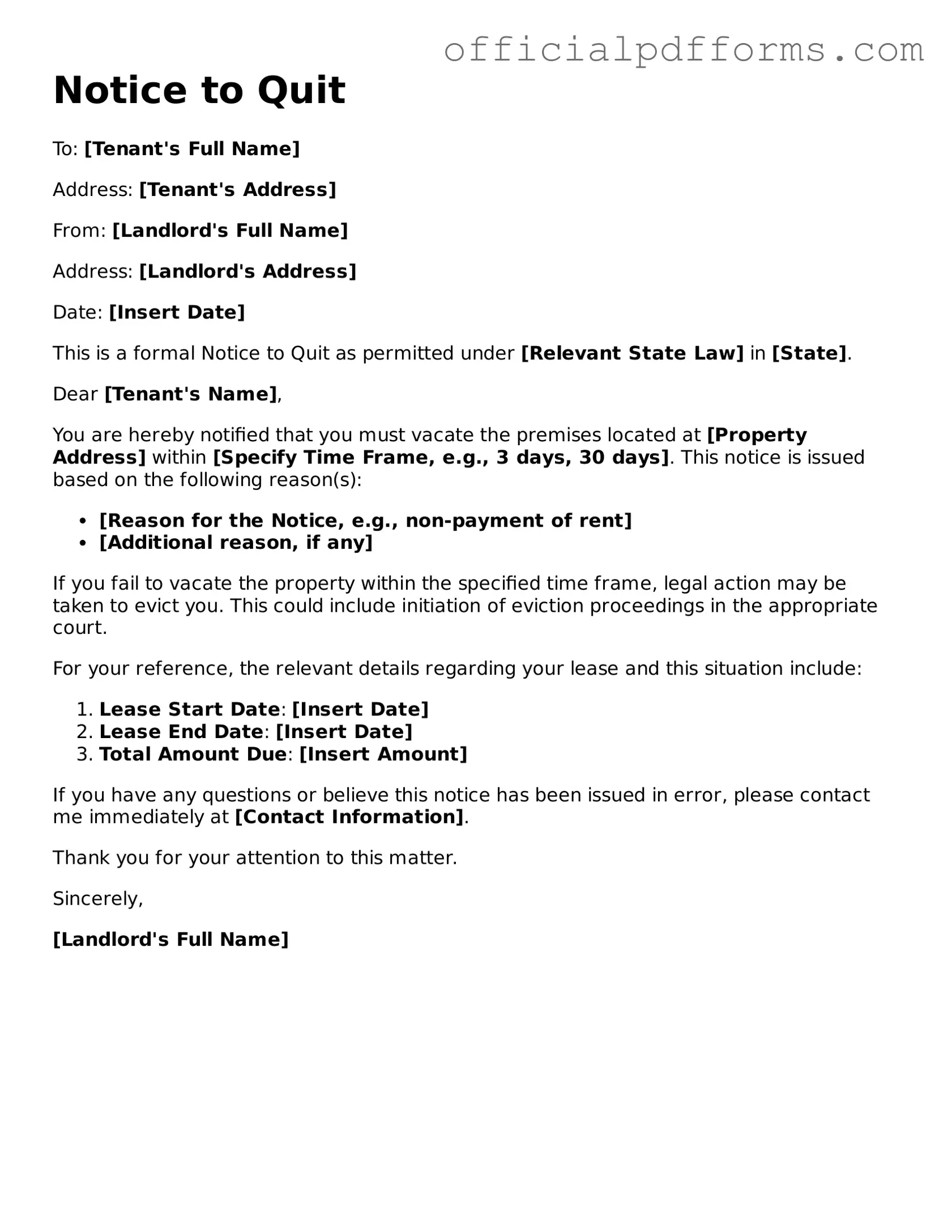A Notice to Quit form is a legal document used by landlords to inform tenants that they must vacate the rental property. This notice typically outlines the reasons for eviction, such as non-payment of rent or lease violations, and specifies a deadline for the tenant to leave.
When should a landlord issue a Notice to Quit?
A landlord should issue a Notice to Quit when a tenant has violated the terms of the lease agreement. Common reasons include:
-
Failure to pay rent
-
Excessive damage to the property
-
Illegal activities on the premises
-
Violation of lease terms
Issuing this notice is often the first step in the eviction process.
How much notice must be given to the tenant?
The amount of notice required varies by state and the reason for eviction. Generally, landlords must provide at least:
-
3 days for non-payment of rent
-
30 days for lease violations
-
7 days for illegal activities
Always check local laws to ensure compliance with specific notice requirements.
What should be included in a Notice to Quit?
A Notice to Quit should include the following information:
-
The tenant's name and address
-
The landlord's name and contact information
-
The reason for eviction
-
The date by which the tenant must vacate
-
A statement regarding the lease agreement
Clarity and completeness are crucial to avoid legal complications.
Can a tenant contest a Notice to Quit?
Yes, a tenant can contest a Notice to Quit. They may do so by responding to the notice, addressing the issues raised, or by seeking legal counsel. If the dispute escalates, it may lead to a court hearing where both parties can present their case.
What happens if the tenant does not leave by the deadline?
If the tenant does not vacate the property by the specified deadline, the landlord may proceed with filing for eviction in court. This legal process can take time and requires proper documentation, including the Notice to Quit.
While it may not be legally required in every situation, using a Notice to Quit form is highly recommended. It provides a clear record of communication and serves as evidence in any subsequent legal proceedings. Proper documentation can help protect the landlord's rights and streamline the eviction process.
